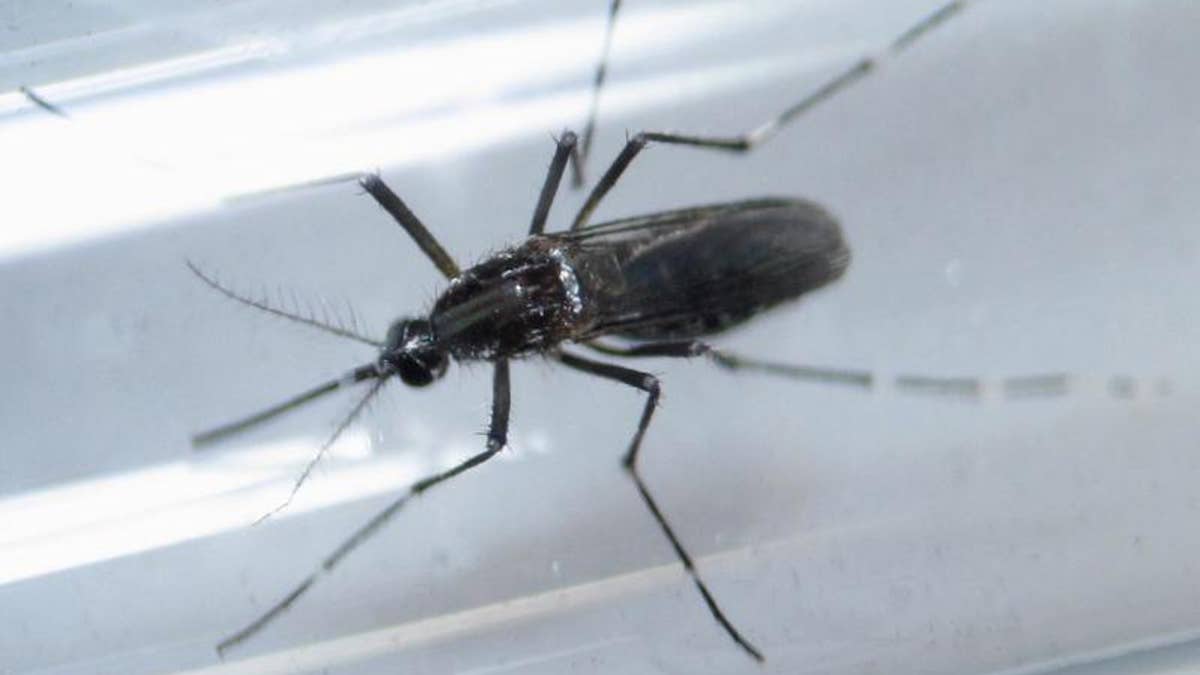
File photo shows an Aedes aegypti mosquito inside a test tube as part of a research on preventing the spread of the Zika virus and other mosquito-borne diseases at a control and prevention center in Guadalupe, neighbouring Monterrey (Copyright Reuters 2016)
CHICAGO – Studies from three different teams of scientists offered proof on Wednesday that Zika can reach and destroy brain cells in the fetuses of pregnant mice, findings that solidify the link between the mosquito-borne virus and birth defects.
In February, the World Health Organization declared Zika a global health emergency based on its association with thousands of cases in Brazil of microcephaly, a birth defect marked by small head size that can cause severe developmental problems.
Scientists have been scrambling to understand how a mosquito-borne virus that generally causes mild symptoms in adults could do so much such damage to a developing fetus.
The studies in pregnant mice, published in the journals Nature, Cell and Cell Stem Cell, showed Zika invading brain cells in fetal mice, demonstrating convincingly that Zika can attack fetal brain tissue and cause injury.
There are no vaccines or medicines for Zika infections. Experts say the new findings will pave the way toward testing vaccines and treatments in mice before trying them on humans.
Normally, mice do not develop Zika infections, so each of the research teams developed different ways to cause pregnant mice to pass the virus to their offspring.
In the Nature paper, researchers infected two commonly available strains of laboratory mice with extremely high doses of Zika cultivated from a Brazilian patient from Paraiba, a state at the center of Brazil's Zika outbreak.
Their study showed that the Brazilian strain can get through the placenta and inhibit the growth of fetal mice, even causing signs of microcephaly.
The research, led by Alysson Muotri of the University of California, San Diego School of Medicine and Patricia Beltrao Braga of the University of Sao Paulo in Brazil, also showed the virus could infect clusters of brain cells in lab dishes, disrupting growth or causing cells to die.
Dr. Derek Gatherer, a biomedical and life sciences expert at Lancaster University in Britain, said the study "adds to the weight of evidence that Zika virus is the cause of the apparent spike in microcephaly and other birth defects observed in Brazil," and suggests that other countries with Zika transmission may see similar spikes.
SIGNIFICANT ABNORMALITIES
Separate experiments by Dr. Michael Diamond of Washington University in St. Louis and a team of Chinese researchers also showed Zika was capable of damaging fetal brain cells.
Diamond's experiments, published in Cell, involved mice with compromised immune systems. In one, the team bred mice with genetically weakened immune systems. When exposed to Zika, the virus killed most fetuses within a week, and those that survived had significant abnormalities, including severely stunted growth.
In these mice, the researchers saw genetic material from the Zika virus in the mouse placentas that was 1,000 times greater than in the blood of the mothers, suggesting the virus had been growing in the placenta.
In the second model, normal pregnant mice were given an antibody that blocked their immune response. When exposed to Zika, the fetal mice survived, but their growth was stunted, and viral genetic material was present in their heads and bodies.
In the third study, in Cell Stem Cell, Chinese researchers directly injected Zika into the brains of fetal mice in utero.
When these mice were born, they showed characteristic features of microcephaly, according to collaborators Zhiheng Xu of the Chinese Academy of Sciences and Cheng-Feng Qin of the Beijing Institute of Microbiology and Epidemiology.
After the mice were injected during the equivalent of the second trimester in humans, the fetal brains shrank as the amount of virus increased.
Diamond said the mouse experiments will be useful for testing new vaccines and drugs.
"Now, we can begin to see whether vaccines can prevent transmission of the Zika virus to the fetus," Diamond said.
U.S. health officials have concluded that Zika infections in pregnant women can cause microcephaly. The WHO has said there is strong scientific consensus that Zika can also cause Guillain-Barre, a rare neurological syndrome that causes temporary paralysis in adults.
